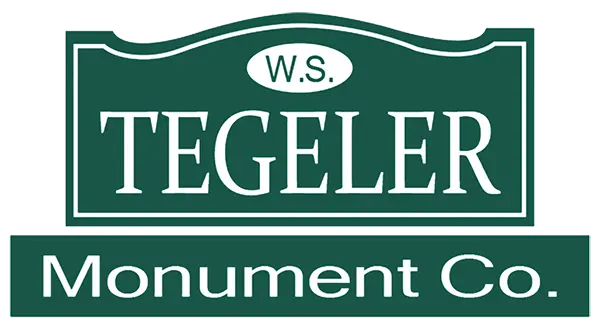Greek Orthodox burial traditions are deeply rooted in the church’s teachings and reflect centuries of faith, respect, and spiritual beliefs. From the design of monuments to the sacred rituals that accompany the burial, every element of the process emphasizes the importance of faith, family, and community. Greek Orthodox burial traditions are not only a reflection of the church’s timeless values but also a profound expression of devotion to the departed. Each detail, from the preparation of the body to the final prayers at the gravesite, is designed to honor the sacred passage of the soul. These customs not only honor the deceased but also provide solace and spiritual support for the living.
To help you navigate these meaningful practices, we’ve compiled answers to frequently asked questions regarding Greek Orthodox burials.

What is the Religious Significance of a Headstone in Greek Orthodox Burial Traditions?
In Greek Orthodox tradition, the headstone serves as a permanent marker of the deceased’s resting place and a testimony to their Christian faith. The headstone often features religious symbols, such as the cross, and serves as a site for family and friends to gather, pray, and reflect on the deceased’s life and eternal resting place.
Are There Specific Requirements for Grave Markers in Greek Orthodox Cemeteries?
Yes, Greek Orthodox cemeteries often have specific requirements for grave markers. These guidelines typically emphasize modesty and respect for the deceased. The use of religious symbols, particularly the cross, is common, and many cemeteries require adherence to traditional shapes and sizes for markers. It’s important to consult with the cemetery and your monument provider to ensure all guidelines are followed.
How are Greek Orthodox Monuments Typically Designed and Placed in Cemeteries?
Greek Orthodox monuments are traditionally simple and dignified, featuring religious imagery like the cross or icons of saints. The monument is placed at the head of the grave and typically faces east, symbolizing the resurrection of Christ. The design may also include inscriptions in Greek, reflecting the heritage and faith of the deceased.
What Symbols and Motifs are Commonly Found on Greek Orthodox Monuments?
Common symbols on Greek Orthodox monuments include the cross, the Chi-Rho (an early Christian symbol), icons of saints, or depictions of Jesus Christ. These symbols reflect the deep religious beliefs of the deceased and their connection to the Orthodox Christian faith. In some cases, family crests or other cultural motifs may also be included, provided they align with the church’s teachings.
How are Greek Inscriptions Typically Translated and Incorporated onto Headstones?
In Greek Orthodox burial traditions, inscriptions are often written in both Greek and English. The inclusion of Greek honors the heritage and faith of the deceased, while English may be used for the benefit of family members and visitors who may not read Greek. The inscriptions typically include the name of the deceased, their birth and death dates, and a prayer or phrase of religious significance, such as “Eternal Memory.”
What is the Significance of the 40-Day Memorial Service in Greek Orthodox Customs?
In Greek Orthodox tradition, the 40-day memorial service, also known as the Mnimosino, is an important part of the grieving process. This service, which takes place at the gravesite or in the church, is believed to help the soul of the deceased transition to the afterlife. The service includes prayers for the deceased and is a time for family and friends to gather in remembrance.
Can Families Personalize the Design of a Headstone within Greek Orthodox Burial Guidelines?
Yes, while the design of a Greek Orthodox headstone typically adheres to religious customs, families have the option to personalize the monument in a way that honors their loved one’s unique life and faith. This could include choosing specific symbols, inscriptions, or even adding a photograph or portrait of the deceased. As long as the design respects the traditions and regulations of the Orthodox Church, personalization is encouraged.
What Are the Traditional Sizes and Shapes of Greek Orthodox Headstones?
Greek Orthodox headstones are traditionally modest in size and rectangular in shape, though variations may exist depending on local customs and cemetery regulations. Some families may opt for larger upright monuments, while others choose simpler flush markers. The size and shape should reflect the values of humility and respect, which are central to the Orthodox faith.
How Are Greek Orthodox Burial Plots Typically Arranged within a Cemetery?
Greek Orthodox burial plots are generally arranged in rows with the headstones facing east, symbolizing the resurrection of Christ. Family plots are common, allowing multiple generations to be buried together in the same area. This reflects the strong emphasis on family and community within the Orthodox faith.
Contact Tegeler for Custom Headstones in Maryland and Beyond
If you have any questions or need guidance in planning a Greek Orthodox burial, Tegeler is here to provide compassionate, personalized, and expert assistance. We recognize the deep spiritual significance that accompanies Orthodox burial traditions, and we are dedicated to honoring your loved one in a way that fully respects both their life and faith. Our team has extensive experience working within the guidelines of Greek Orthodox customs, ensuring that every aspect of the burial process is handled with the utmost care and respect.
We are committed to providing families with support and understanding during this difficult time, offering tailored services that meet your specific needs. Contact us today or call (410) 944-0300. You can also visit our location at 5804 Windsor Mill Rd., Baltimore, MD 21207, to discuss your plans. Let us help you honor your loved one with the dignity, respect, and reverence they deserve, all rooted in the sacred and timeless traditions of the Greek Orthodox faith.

